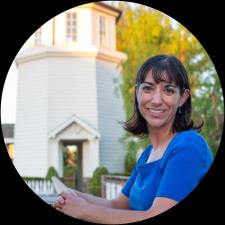Don L. answered • 10/23/15
Tutor
5
(18)
Fifteen years teaching and tutoring basic math skills and algebra
Hi Robin, we can find the time Peter spent with visits to the old folks home by multiplying his total community service time by the time he spent with visits to the old folks home or:
Time spent visiting old folks homes = 8 1/6 * 4/7
8 and 1/6 is equal to 49/6. Replace the 8 1/6 by 49/6 giving:
49/6 * 4/7
We can reduce this since 49 is 7 * 7. One of the two sevens in the first numerator will cancel the 7 in the denominator of the 4/7 term. This gives:
7/6 * 4 = 28/6 = 14/3 or 4 2/3 hours. Therefore, Peter spent 4 2/3 hours visiting the old folks homes last year.
If Peter plans to increase his community service this year to 1 1/5 of last years community service, all we need to do is multiply 1 1/5 * 8 1/6 to get the total community service hours for this year.
1 1/5 * 8 1/6
Convert the mixed fractions:
1 1/5 = 6/5
8 1/6 = 49/6
This gives:
6/5 * 49/6
We can cancel the 6 in the numerator of the first fraction with the 6 in the denominator of the second fraction giving:
1/5 * 49/1 = 49/5 or 9 4/5 hours.
Peter will spend 9 4/5 hours doing community service this year.
We can find the difference between last years community service hours and this years community service hours by subtracting 8 1/6 from 9 4/5.
9 4/5 - 8 1/6
Convert the mixed fractions:
9 4/5 = 49/5
8 1/6 = 49/6
This gives 49/5 - 49/6. We need to find the common denominator for 5 and 6. Since 5 is a prime number, the common denominator will be 5 * 6 or 30.
Change the denominators to 30, the common denominator.
49/5 * 6/6 - 49/6 * 5/5
294/30 - 245/30 = 49/30 or 1 19/30 hours.
Peter will spend 1 19/30 hours more this year in community service then he did last year.





